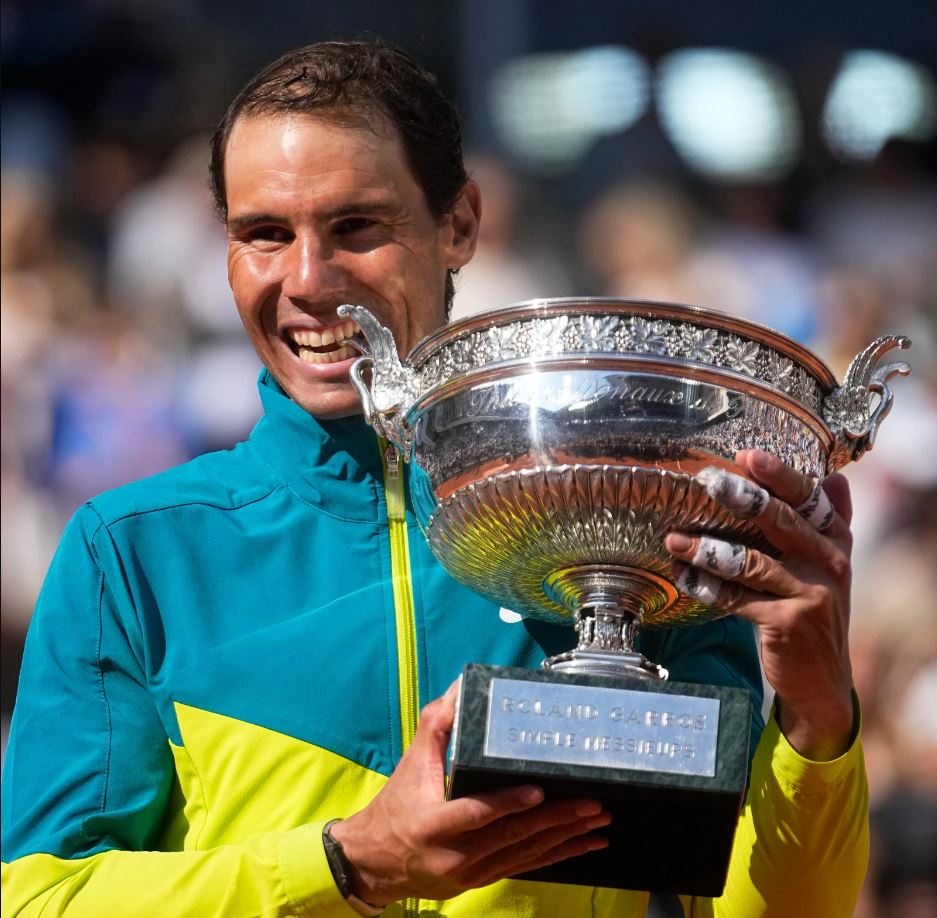There was no deception on Rafael Nadal’s part when he limped and grimaced his way through the final set of an early-round loss at the Italian Open last month. He sounded particularly weary of the grind and the chronic pain in his left foot. Perhaps Rafael Nadal really does mean it when he downplays his chances at Roland Garros.
When Nadal returned to Roland Garros, one of his most frequented training grounds, he found himself in a situation that was not at all familiar to him. When the competition started, he had only played a relatively limited number of matches on clay courts and did not have any clay-court championships to his record this season. It seemed as if Novak Djokovic was regaining his footing in the match. A young Spaniard by the name of Carlos Alcaraz seemed to be skyrocketing in popularity. Nadal said on Sunday that in order for him to participate in the competition, he had painkilling injections before each round. These injections caused his foot to go numb, as if it had been put to sleep.
Nadal has now won a men’s record 22 Grand Slam singles titles, two more than Djokovic, who Nadal defeated in the quarterfinals of this tournament, and Federer, who at age 40 is still recovering from his most recent knee surgery. This gives Nadal the record for the most Grand Slam singles titles ever won by a male player.
Nadal’s victory on Sunday made him the oldest man to ever win the French Open. His compatriot Andrés Gimeno, who won the title in 1972 at the age of 34, was the previous record holder for the oldest winner of the tournament. Billie Jean King and King Felipe VI of Spain were both present for the match.
Nadal has stated that he will go through a process known as radio frequency ablation later this week in an effort to find a solution that will be effective for a longer period of time. During this procedure, radio waves will be transmitted through a hollow needle and inserted into the nerves in his left foot that are the source of his constant pain. If the surgery is successful, which is by no means certain, the heat from the radio waves may inhibit the nerves from delivering pain signals to Nadal’s brain. However, this is only if the procedure is successful.
Nadal stated that if the treatment was ineffective, he would have to ask himself difficult questions about his future in the game and whether he wanted to risk foot surgery. He was informed that the surgery could impact his mobility “to be competitive again” and could “take a long time” to recover from. Nadal said he would have to ask himself these questions if the treatment was ineffective. Nadal said he would also have to ask himself whether he wanted to risk foot surgery.
As the match went, it seemed as if he was becoming more and more ready to play tennis against Ruud, building more speed and accuracy along the way. As the match progressed, Nadal struggled to find his rhythm and eventually lost his service in the third game after committing two double faults and an off-rhythm forehand unforced mistake into the centre of the net. Nadal was not at his best early and was at times far from his peak form. But Ruud was also having trouble finding his footing. He seemed tense and constrained during the crucial moments of the first set, and then he was outplayed during the crucial points of the latter stages when he had gotten over his fears. Ruud was having trouble finding his way.
After missing virtually all of the second half of the 2021 season due to the foot injury — he has a disease called as Müller-Weiss syndrome — he made a resounding comeback to win the Australian Open. He rallied to overcome Daniil Medvedev in a five-set final that took place in January.
He went on to start the season with 20 consecutive wins until losing to the American Taylor Fritz in the final of the BNP Paribas Open in March. Part of the reason for his loss was a new injury: a stress fracture in his ribcage. Because of this, Nadal was had to take a sabbatical for a period of six weeks, causing him to miss the most of the clay-court season. He returned to action in Madrid a month ago, having had very little time to prepare.
In Rome, he was eliminated in the quarterfinals by Alcaraz and then in the round of 16 by Denis Shapovalov of Canada. Both of his opponents were from Canada. But Nadal came to Roland Garros with his fantastic memories and his lifelong physician, Angel Ruiz-Cotorro, who was able to assist Nadal in managing the discomfort and a very hard draw. Nadal went on to win the tournament.

